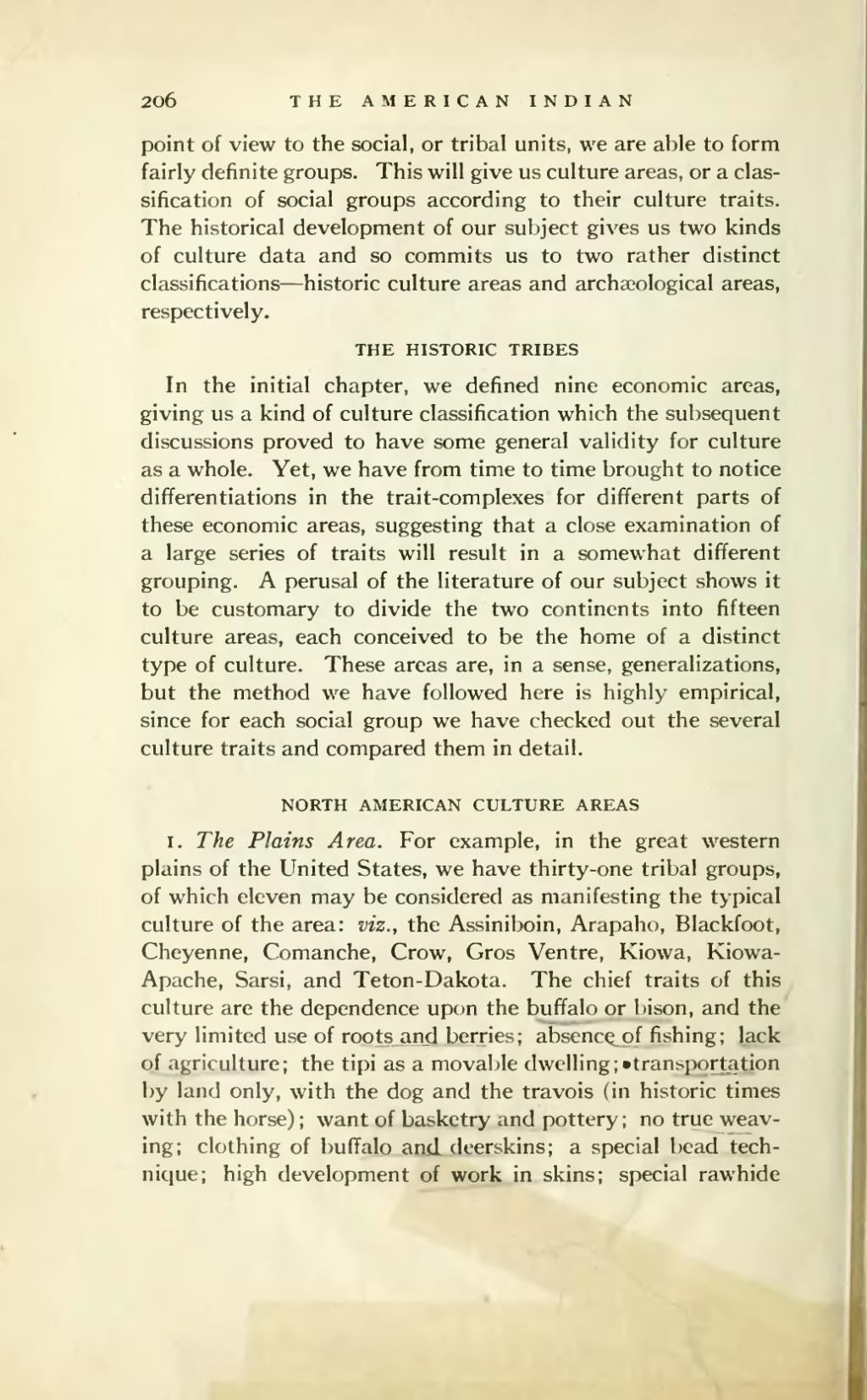point of view to the social, or tribal units, we are able to form fairly definite groups. This will give us culture areas, or a classification of social groups according to their culture traits. The historical development of our subject gives us two kinds of culture data and so commits us to two rather distinct classifications—historic culture areas and archæological areas, respectively.
THE HISTORIC TRIBES
In the initial chapter, we defined nine economic areas, giving us a kind of culture classification which the subsequent discussions proved to have some general validity for culture as a whole. Yet, we have from time to time brought to notice differentiations in the trait-complexes for different parts of these economic areas, suggesting that a close examination of a large series of traits will result in a somewhat different grouping. A perusal of the literature of our subject shows it to be customary to divide the two continents into fifteen culture areas, each conceived to be the home of a distinct type of culture. These areas are, in a sense, generalizations, but the method we have followed here is highly empirical, since for each social group we have checked out the several culture traits and compared them in detail.
NORTH AMERICAN CULTURE AREAS
1. The Plains Area. For example, in the great western plains of the United States, we have thirty-one tribal groups, of which eleven may be considered as manifesting the typical culture of the area: viz., the Assiniboin, Arapaho, Blackfoot, Cheyenne, Comanche, Crow, Gros Ventre, Kiowa, Kiowa-Apache, Sarsi, and Teton-Dakota. The chief traits of this culture are the dependence upon the buffalo or bison, and the very limited use of roots and berries; absence of fishing; lack of agriculture; the tipi as a movable dwelling; transportation by land only, with the dog and the travois (in historic times with the horse); want of basketry and pottery; no true weaving; clothing of buffalo and deerskins; a special bead technique; high development of work in skins; special rawhide
